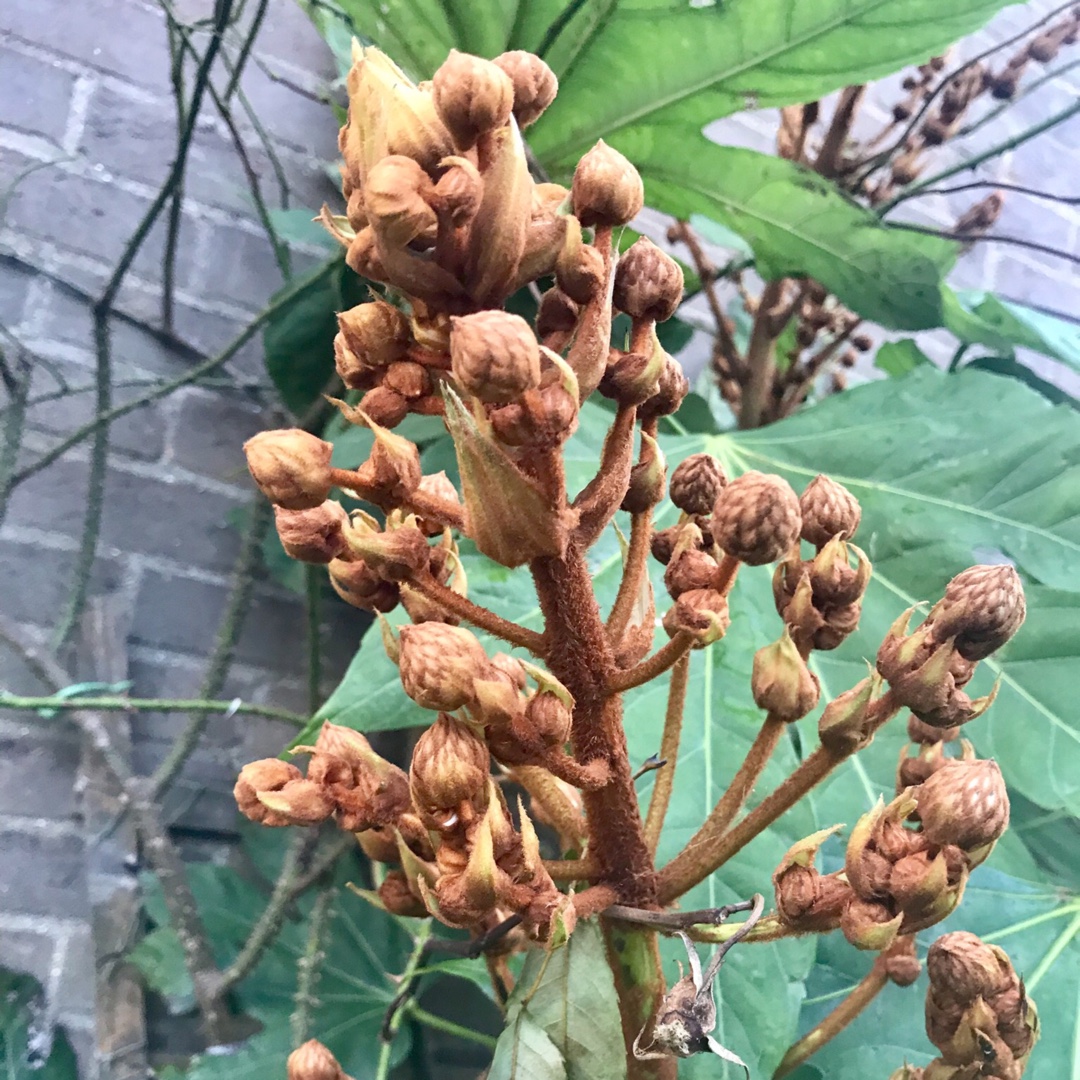
Fatsia polycarpa
Fatsia polycarpa
Fatsia is an evergreen shrub that produces white flowers during late autumn through to early winter. The flowers are followed by small inedible black fruit. Sporting large shiny leaves with eight fingers, which is where the name "Fatsia" comes from. This plant is most suitable for filling corners in gardens because of it's all year round display. Fatsia polycarpa is longer stalked, less glossy leaves than F. japonica. A recently introduced Taiwanese species which is frost hardy to -10º
Contributed by @petecross
-
Full sun to partial shade
-
Occasional watering
-
Frost Hardy: 23F (-5°C)
-
Medium to heavy
Common name
Fatsia polycarpa
Latin name
Fatsia polycarpa
type
Trees or Shrubs
family
Araliaceae
ph
5.0 - 8.5 Acid - Neutral
Plant & bloom calendar
-
Best time to plant
-
When the plant will bloom
full grown dimensions
 2.50 M
2.50 M
2.50 M
2.50 M
Fatsia polycarpa
Fatsia is an evergreen shrub that produces white flowers during late autumn through to early winter. The flowers are followed by small inedible black fruit. Sporting large shiny leaves with eight fingers, which is where the name "Fatsia" comes from. This plant is most suitable for filling corners in gardens because of it's all year round display. Fatsia polycarpa is longer stalked, less glossy leaves than F. japonica. A recently introduced Taiwanese species which is frost hardy to -10º
Planting outdoors in Autumn
From Early Autumn TO Late Autumn
Plant new specimens in a well drained but moisture retentive site in autumn.
Flowering
From Mid Autumn TO Late Autumn
Produces small white flowers in clusters followed by black berries.
Planting outdoors in Spring
From Mid Spring TO Late Spring
Plant new specimens in a well drained but moisture retentive site in spring.
Propagating by cuttings
From Mid Spring TO Early Summer
Take softwood cuttings from new growth early in the day in Spring or early Summer. Cut, neatly, a 4" approx. piece of a non-flowering shoot, pinch out the tip, and cut off the bottom leaves. Dip the bottom of the cutting in hormone rooting powder, and carefully place in a pot of cutting compost with the leaves just above the level of the compost. Water, label, cover with a polythene bag, and place in a warm, bright place, out of direct sunlight. Take the polythene bag off periodically for a while for ventilation (at least twice a week)









